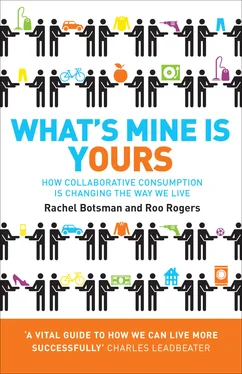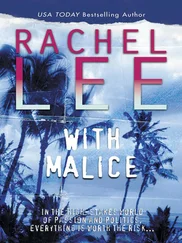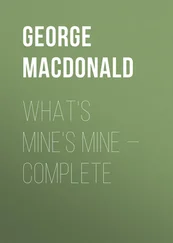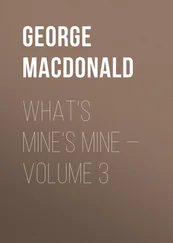Looking back on these relatively simple and useful inventions, you may wonder: What was the harm? People embraced new products in the name of progress, and these products have their benefits. The crucial shift was when the cultural acceptance of disposability broadened past health concerns. How did disposable cups become ubiquitous in our homes and offices, where people have easy access to sinks to clean their own mugs or glasses? How did disposability change from a symbol of health to one of waste and environmental mess? And therein lies the constant tug-of-war between what is seen as progress at the time and future damage.
When Leo Baekeland invented Bakelite, the first man-made plastic, in 1907 – the same year Moore and Luellen started to pursue their cup idea – he intended to make a material that could be bent, moulded, twisted and plied in a number of different ways. It’s impossible that he could have foreseen that Americans alone would one day dispose of about 100 billion plastic bags each year. Most are used just once and discarded. [37] Kay Bushnell, ‘Plastic Bags: Smothered by Plastic’, a paper produced by the Sierra Club, www.sierraclub.org/sustainable_consumption/articles/bags1.asp.
The stories of the paper cup and plastic waste both follow the ‘law of unintended consequences’, where the actions of people have unanticipated and unintended effects, in some cases more significant than the intended effects. Sociologist Robert K. Merton identified five sources of unintended consequences: ignorance, error, immediate interest, basic values and selfdefeating prophecy. Two of these sources are particularly relevant to hyper-consumption: first, ignorance (it’s impossible to anticipate everything); and second, the imperious immediacy of interest. By the latter Merton was referring to instances in which an individual wants the intended consequence of an action (or product) so much that he purposefully chooses to ignore any long-term unintended effects. Both shoppers and manufacturers engage in a combination of these as they participate in the modern-day consumer system.
Just like the Great Pacific Garbage Patch, the environmental effects of consumerism sit just below the surface, a hidden history of materials, resources and impacts. The amount of waste matter generated in the manufacture of a single laptop computer, for instance, is close to four thousand times its weight. [38] Hawken et al., Natural Capitalism.
The tiny micron chip inside that same computer requires 1.7 kilograms of materials to produce and its production generates 100,000 times its weight in waste. [39] Sarah Graham, ‘Making Microchips Takes Mountains of Materials’, Scientific American (6 November 2002).
Until recently, much of the hazardous e-waste from products including old computers, mobile phones and televisions from wealthier nations was shipped to countries in the developing world, including China, Pakistan and Bangladesh. Even though restrictions imposed in the Basel Convention by the United Nations have slowed the export of e-waste exportation, it continues on a gargantuan and destructive scale. [40] Slade, Made to Break, 5.
For the most part, marketers don’t put this kind of information on the label. That’s the ‘ignorance’ part of Merton’s analysis. But we keep our laptops for only two years on average (it was six years in 1997). [41] ‘The E Waste Problem’, posted on the Greenpeace website, www.greenpeace.org/international/campaigns/toxics/electronics/the-e-waste-problem.
That is a conscious choice we make in the immediacy of self-interest. As John Thackara says in Inside the Bubble, ‘ It’s the accumulation of such tiny, unnecessary acts that weigh so heavily on the planet.’ [42] John Thackara, Inside the Bubble (MIT Press, 2006), 22.
We are now a society addicted to ‘throwaway habits’, and many of us are anaesthetized to the consequences. In Britain, every man, woman and child in the country combined produces enough waste to refill London’s Royal Albert Hall every two hours. [43] Neal Lawson, All Consuming (Penguin, 2009), 41.
According to the EPA, only 30 percent of this rubbish is recycled or composted, 13 percent is incinerated, and the other 57 percent ends up in landfills. What exactly do we throw out – and why is there is so much of it?
David Chameides, an Emmy award-winning cameraman in Los Angeles, wanted to find out. He decided to conduct an experiment: he would not throw anything away for one whole year. Chameides kept every single item of rubbish that he created at home and on the road in the cellar of his house. A large tin box was used to hold bags of waste paper, and rubbish bins to hold the rest. Most of the family’s leftover food was given to the dog and the rest was put into a worm composter. Dave created some rules. Any waste that was not safe – medical waste from doctor’s visits, for instance – would be disposed of. The experiment did not apply to his wife and two children. Beyond that, he didn’t create a masterplan for his year of no trash. [44] Brian Walsh, ‘Meet Dave, the Man Who Never Takes Out the Trash’, Time (22 September 2008), www.time.com/time/health/article/0,8599,1843163,00.html.
Dave even admits, ‘If I had totally thought it through, I might not have done it.’ But he did take the experiment seriously, so much so that he even brought the rubbish back in a suitcase from a romantic getaway with his wife in Mexico. Airport screeners baffled by the extra holdall of Mexican rubbish that went through the X-ray machine interrogated the couple.
Soon after he began his experiment, Dave realized the obvious solution. The best way to reduce the amount of trash he produced was to cut back on the amount he consumed in the first place. By taking his own containers to the fishmonger to avoid the wrapping and paying a company to stop his junk mail, he limited his waste for a whole year to thirty pounds (after subtracting recyclable waste), roughly the amount the average American produces in six days. [45] Ibid.
All the ‘good stuff’ we throw away represents just a small amount, given that for every rubbish bin of waste we put out on the pavement, seventy additional bins of waste were produced upstream in production and distribution to make the waste in your bin. [46] Annie Leonard, The Story of Stuff (Free Press, 2010). The transcript of the video can be found at www.storyofstuff.com/pdfs/annie_ leonard_footnoted_sript.pdf.
Annie Leonard explains in her book The Story of Stuff, ‘Guess what percentage of total material flow through this system is still in product or use 6 months after their sale in North America. Fifty percent? Twenty? NO. One percent. One! In other words. . 99 percent of the stuff we run through this system is trashed within 6 months.’ [47] Ibid.
And the stuff we throw away is just one half of the waste. The other half is all the stuff we buy and never or rarely use.
Self-Storage Self
Think, for a moment, about something you bought that you never ended up using. An item of clothing you never ended up wearing? A book you never read? Some piece of electronic equipment that never even made it out of the box? It is estimated that Australians alone spend on average $10.8 billion AUD (approximately $9.99 billion USD) every year on goods they do not use – more than the total government spending on universities and roads. That is an average of $1,250 AUD (approximately $1,156 USD) for each household. [48] Clive Hamilton, ‘Why Consumer Capitalism Loves Waste’, quoted in his speech to the 6th Asia Pacific Roundtable for Sustainable Consumption and Production (October 2005), www.clivehamilton. net.au/cms/media/documents/articles/Consumer_Capitalism_ Loves_Waste.pdf.
All the things we buy that then just sit there gathering dust are waste – a waste of money, a waste of time, and waste in the sense of pure rubbish. As the author Clive Hamilton observes, ‘The difference between the stuff we buy and what we use is waste.’ [49] Ibid.
Rubbish and storage are just two different endgames of the same problem.
Читать дальше












